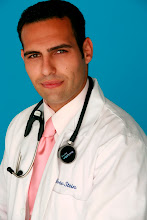These are common patient history entries we frequently receive at our clinic. Headaches are one of the most common complaints prompting patients to visit a health care provider. Many patients ask, “…what is a headache?” The National Institutes of Health (NIH) describe four types of headache: vascular, muscular contraction or tension, traction and inflammatory.
The most common form of a vascular headache is migraine. Migraine sufferers usually complain of severe pain on one or both sides of the head, nausea or vomiting and sometimes visual changes. There is often a heightened sensitivity to light or noise prompting migraine sufferers to lay in a dark, quiet room until the migraine passes. Women are more likely to suffer from migraines than men and the severity of symptoms can be so extreme that all activity must be stopped until it passes.
The next most common type of vascular headache is the toxic headache produced by a fever. Other vascular headache types include “cluster” headaches, which are characterized by repeated episodes of intense pain that start in one spot and spread out from that spot. These may only last a few minutes to an hour but carry a very high level of pain and activity intolerance. Another common type of vascular headache is that resulting from high blood pressure.
Muscle contraction or tension headaches involve tightening of the facial and neck muscles. These often start in the neck and radiate over the top or to the sides of the head. The muscles in the neck are usually extremely tight and tender and often, moderate pressure applied with the finger or thumb to these muscles will prompt radiating pain into and/or over the top of the head. This can also result in significant activity intolerance but usually not as severe as migraine or cluster headaches.
Traction and inflammatory headaches result because of other conditions that range from a sinus infection to a stroke. These types of headaches can serve as a warning sign of a more significant or serious condition. Another example is meningitis as well as other conditions affecting the sinuses, spine, neck, ear, and teeth.
The NIH suggests, when headaches occur ≥3 times a month, that “… preventive treatment is usually recommended.” Certainly, in some cases, medication may be indicated but only after ruling out a more serious condition and after exhausting less invasive treatments that carry fewer side effects.
The American Chiropractic Association recommends: 1) avoid long time periods of staying in one position (computer, sewing machine, reading, etc.) and take stretching/neck range of motion exercise breaks every ½ to 1 hour; 2) Exercise - walking, low impact aerobics; 3) Avoid teeth clenching (due to straining the temporomandibular - TMJ, or jaw joint); 4) Drink lots of water - stay hydrated.
Chiropractic care may include spinal manipulation (adjustments), nutritional advice (dietary suggestions, vitamin/mineral options such as a B complex), exercise, posture retraining, and relaxation techniques. If you, a family member or a friend require care, we sincerely appreciate the trust and confidence shown by choosing our service. If headaches are a problem, doesn’t a trial of chiropractic make sense prior to utilizing a more risk oriented treatment option? We look forward in serving you and your family.

No comments:
Post a Comment